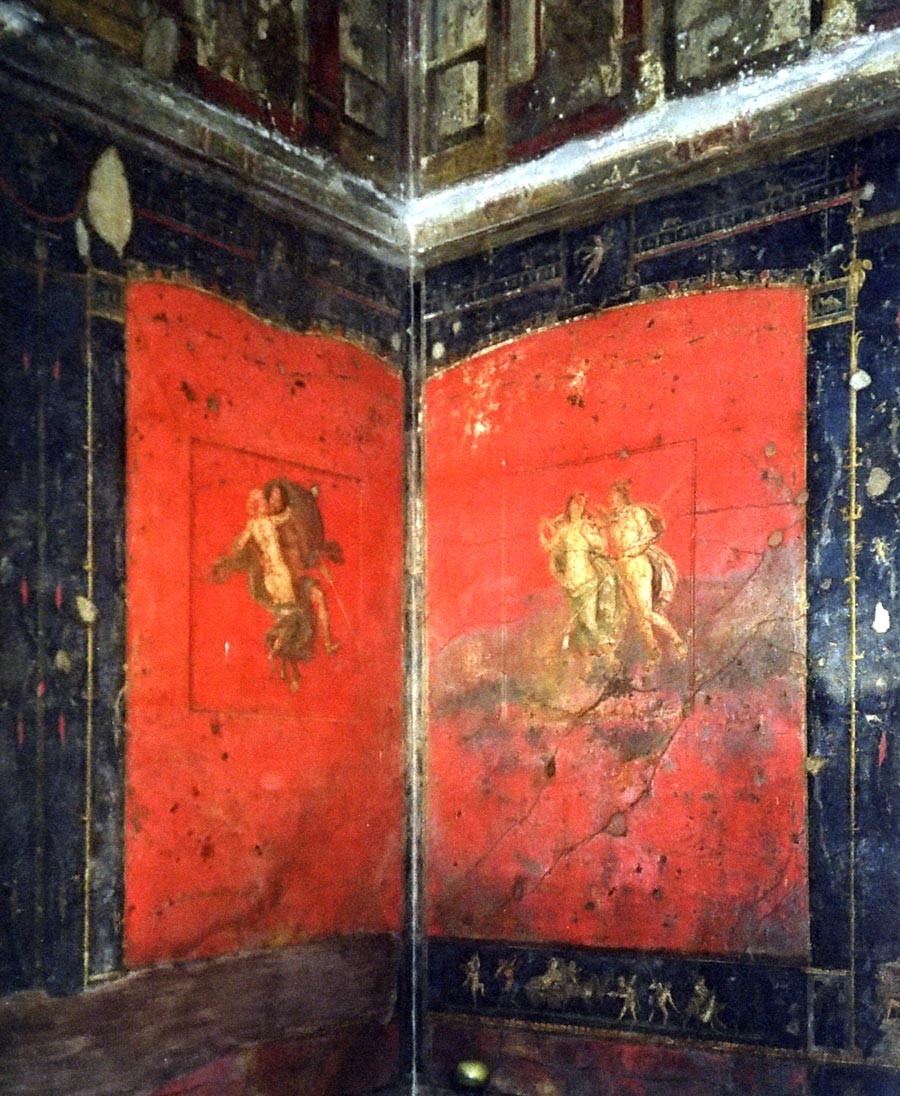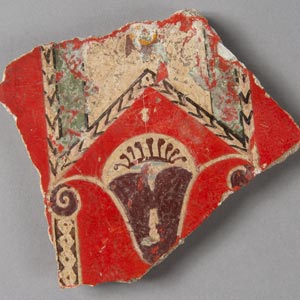Using Red

How did the Romans describe it?
- rubeo or ruber: ruddy, colored by blood, blushing, shame
- rufus: red-headed
- puniceus: the color of Phoenician (or Tyrian) dye
- rutilus: shining, golden, glittering
- sanguineus or haematinus: blood, bloody, blood-colored
- flammeus: fiery, flame-colored, glowing
- minium: red lead
- sinope: red ochre
Where was it used?
- Fashion: Soldiers often wore red-dyed tunics. Civilians wove red decorations into items of clothing, like the sprang bag shown below. Roman women liked to apply red pigment to their cheeks and lips to enhance their beauty.
- Art: Red decorated building exteriors, sculptures, terracotta figurines, and interior walls. The red background of the Villa of the Mysteries wall painting is made from cinnabar, also known as vermilion, one of the most desired pigments in the 1st-century Roman world.
Artifacts
The main roads leading to many towns in Roman Italy were lined with graves of all sizes, including tombstones like this one. Their inscriptions were painted red to make them easier for those passing by to read them. Even Roman cemeteries were colorful!




